On View
In Germany, a Former Coal Plant Reinvents Itself as a Cultural Center Fueled by Experimental Art and Green Energy
E-Werk Luckenwalde's concept of "art electricity" offers a new model of sustainability, for artists and the planet.
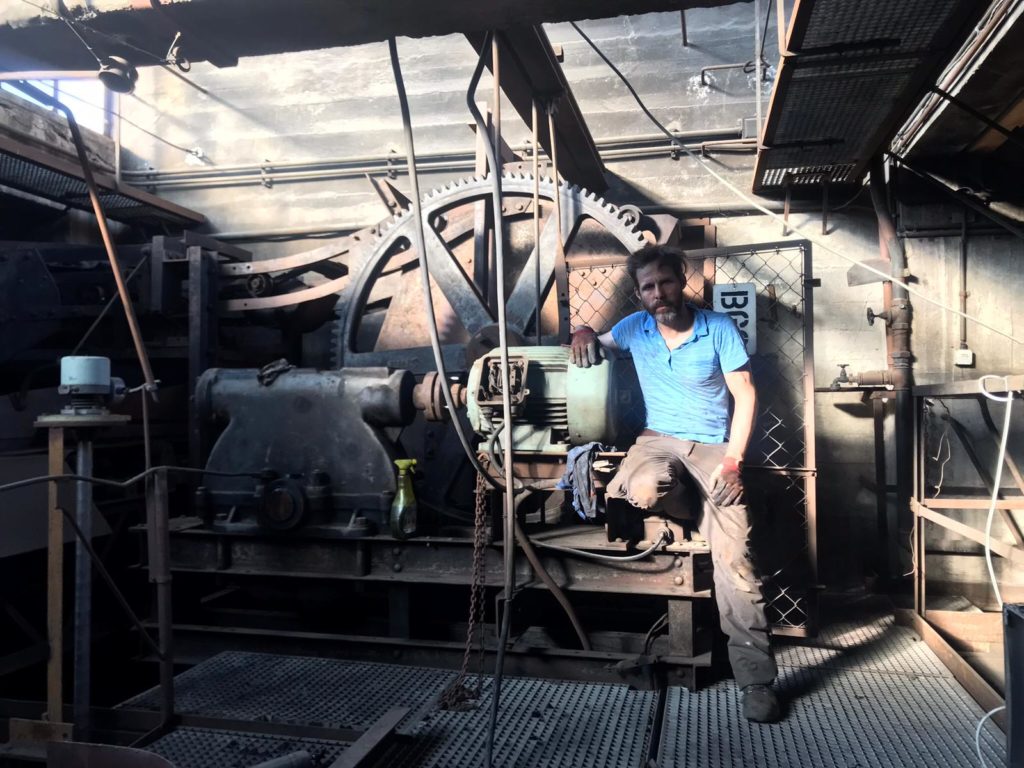
E-Werk Luckenwalde's concept of "art electricity" offers a new model of sustainability, for artists and the planet.

Kate Brown

When Pablo Wendel showed off the new, soon-to-be-inaugurated E-WERK art center last Friday for press and select guests, the highlight was not in the galleries. Rather it came in the ancient-looking generator room of this former East German power plant. There, Wendel flicked a switch, causing a massive machine overhead to grumble and then thunder into motion.
This was just a test-run to give a glimpse of what the initiative is all about. Located less than an hour by train from Berlin, E-WERK is taking the trend of post-industrial cultural institutions to a whole new level by re-enlivening the old facility with the power of art—quite literally. This fall, the facility will be officially re-activated as an ambitious new arts center that doubles as a functioning green energy producer.
On September 14, the repurposed coal plant will reopen to a different crowd than what residents of the surrounding area of Luckenwalde might recall. Once the power is officially turned back on that night, the plant will be inaugurated by an evening of performances, unsubtly called “Power Night,” which will take over the turbine hall and a neighbouring Bauhaus-designed public bath.
Organized by UK performance festival Block Universe, the program features promising performance artist Nora Turato and German artist Nina Beier, among others.
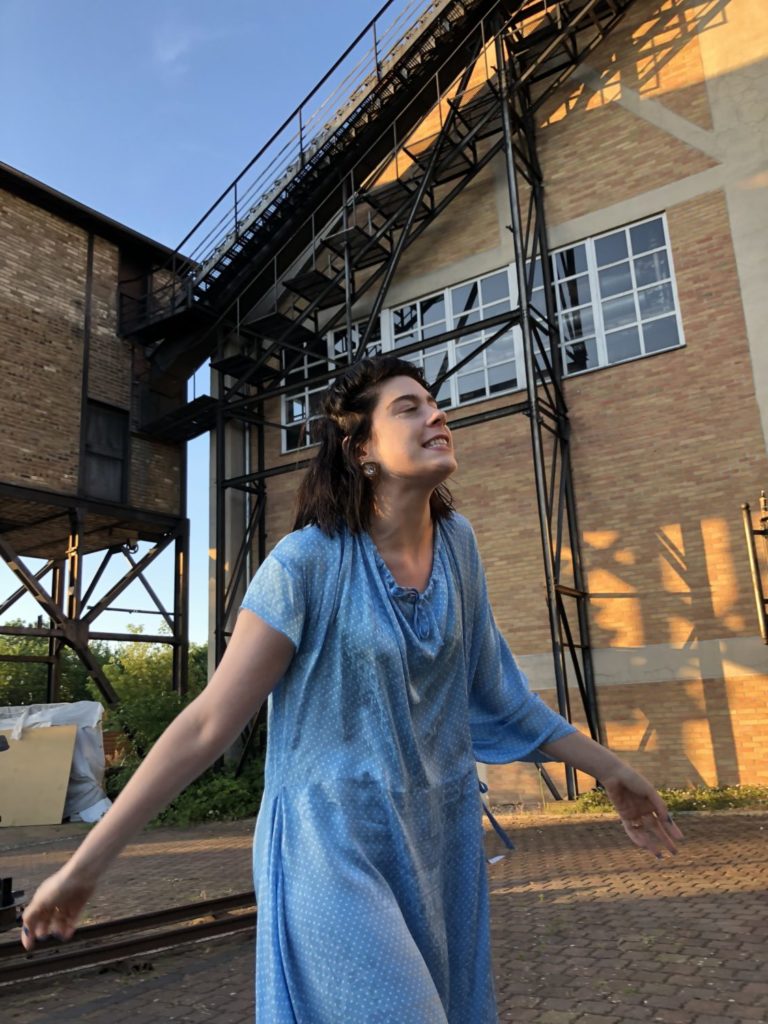
Nora Turato performing at E-Werk for press and VIPs on Friday, June 28. Photo: Kate Brown
Wendel and British curator Helen Turner are the artistic director duo behind the forward-thinking project.
“E-WERK Luckenwalde is a pioneering example of how cultural institutions can take concrete action against the ecological issues of our future,” wrote Turner in an official statement. She described the art program as modelling a way “to implement effective socio-political change through interdisciplinary and cross-border cooperation.”
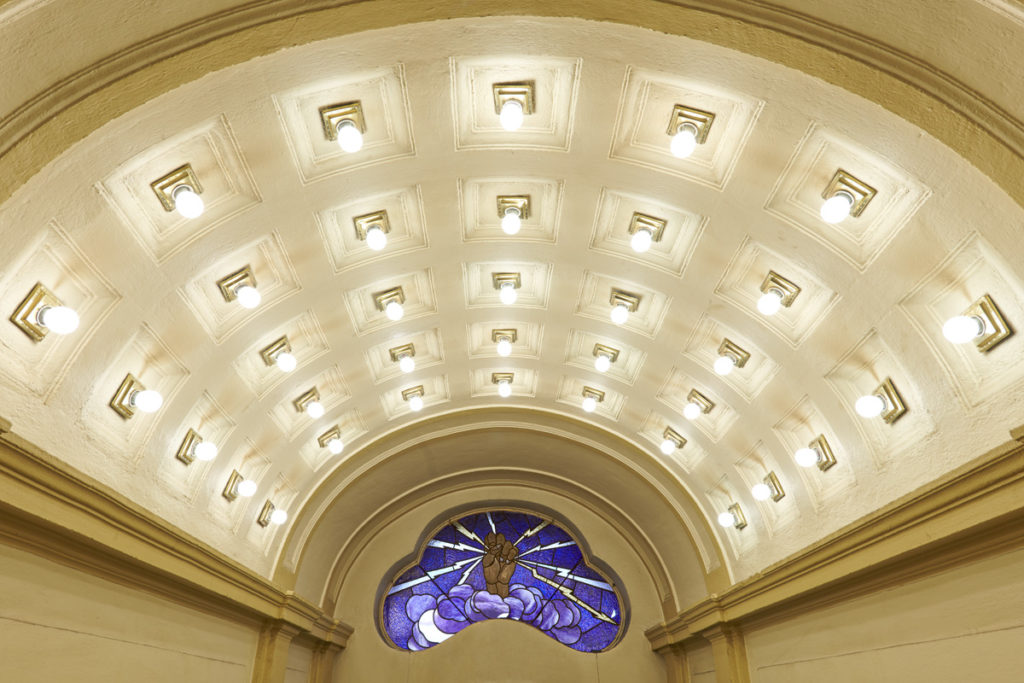
Interior hall of the power plant, with a stained glass window depicting a left hand with electrical bolts in its fist. Courtesy E-Werk.
While the old coal plant dates back to 1913, Wendel has worked with architects and engineers to re-animate the mechanical infrastructure to produce and supply renewable electricity on “an industrial scale.” Instead of using brown coal, an infamous polluter, E-Werk is powered by spruce pine chips that are already produced as a byproduct by a neighboring factory. The charcoal that results from the burning will be used as a soil nutrient and its hot water will go into on-site coffee roasting and beer brewing facilities. E-Werk hopes to become carbon neutral.
The new institution, which sprawls over four floors and 10,000 meters of the historic building, is set to be focused on other kinetic art works as well. For September, London-based artist Nicolas Deshayes will inaugurate the building with a show of cast-iron wall sculptures that pump hot water through contorted interior channels, functioning as radiators. The works will also be switched on during the opening and begin to emit heat.
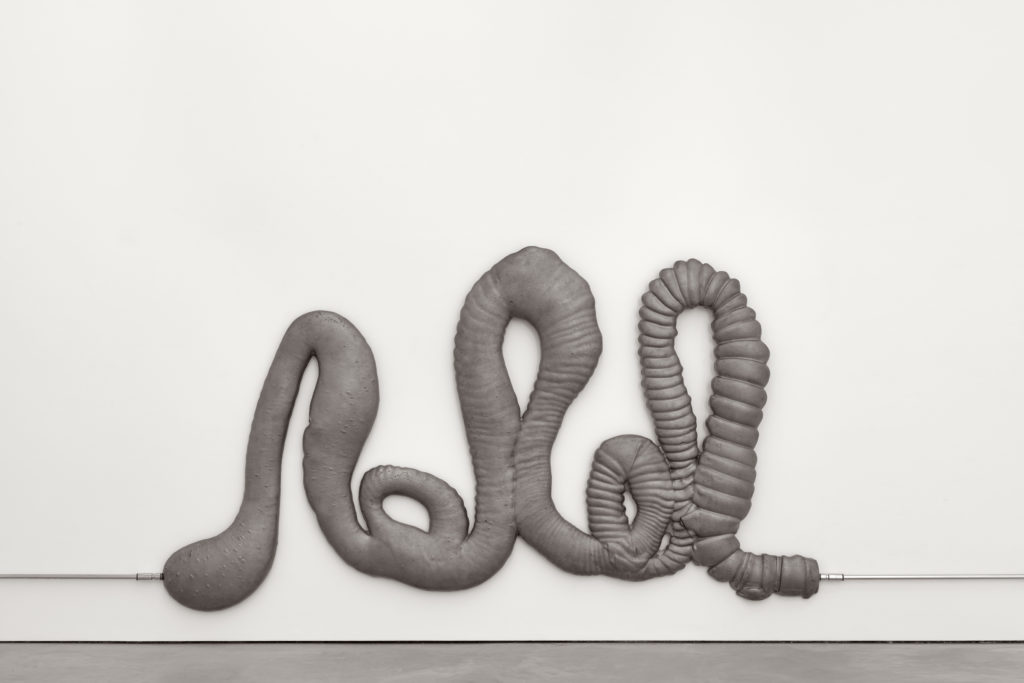
Nicolas Deshayes’s Thames Water (2016).
“We were so fed up about the economic model we were forced to live in as artists. We want to establish an alternative,” Wendel told the Guardian this spring. “We would like to insert artists in industry rather than being at the whim of the commercial art market.” The artist had come across the defunct power plant outside of Berlin, which he quickly snapped up; he keeps a large studio there, too, where he repurposes old power machines and their components.
In addition to exhibition galleries, E-Werk will also have a residency program, workshops, and affordable studio spaces, providing revenue on top of the income Wendel and Turner are aiming to generate as micro-power providers. The studios should be deeply appealing to Berlin artists—it is just on the outskirts of the city, and the German capital is in the midst of a deepening housing (and studio) crisis. Some are already occupied.
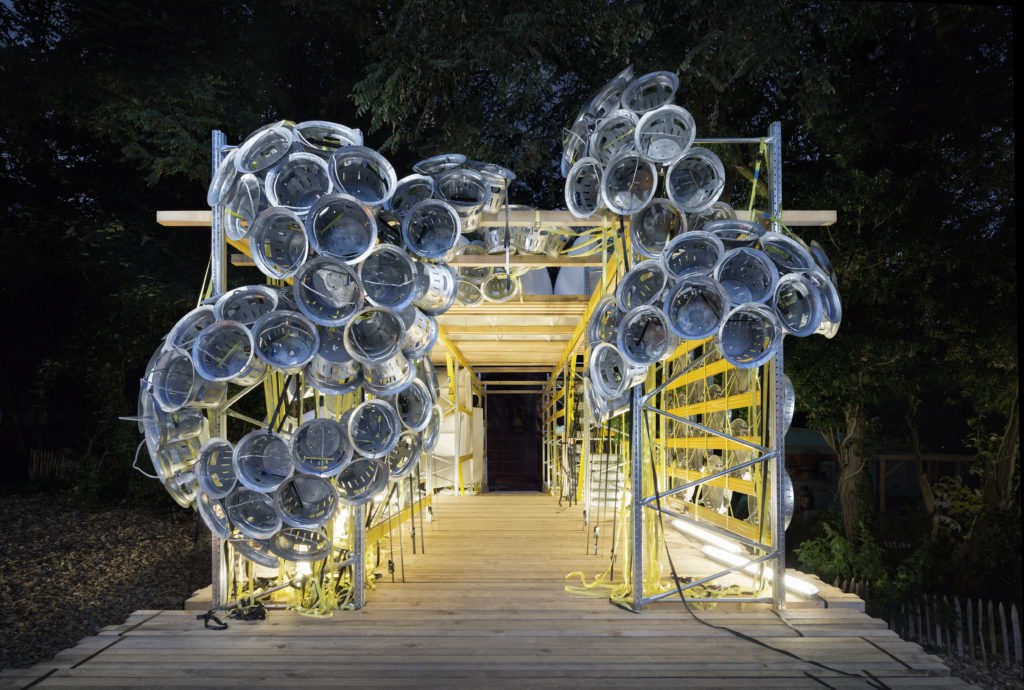
Infobridge, Umschichten (2014). Courtesy E-Werk.
Fittingly, Wendel’s wider practice is all about power: He has been working with electricity to produce artworks that are kinetic and generate energy themselves. Some years ago, he founded Performance Electrics, a not-for-profit art collective and electricity provider; with the pseudo-business model, Wendel can boast actually powering a sculpture park in northern Germany with his wind sculptures. All of the electrical profits from Performance Electrics’s power business, including what will be generated at E-Werk, are reinvested into culture and back into its patented “Kunststrom” technology (translated as “art electricity”).
Alongside running their art program, and even more grandly, E-Werk hopes to add power to the national grid in September, which the public at large can actually buy (they will have capacity to power for 100 single-unit households). Already, Performance Electrics has 23 clients at other power-facility-sculptures that Wendel has made, including Stadtgalerie Saarbrücken in the South of Germany, and Kunsthalle Göppingen, just outside of Stuttgart. At E-Werk, the hope is that some of the local town will convert to its energy source. But will the old East German town buy into so-called “21st century art electricity”? It’s anyone’s guess, until Wendel flicks the switch.
E-WERK Luckenwalde will be open to the public from 15 September 2019 every Thursday to Sunday, 11 a.m. – 6 p.m. It’s located at Rudolf-Breitscheid-Str. 73 14943 Luckenwalde, Germany.